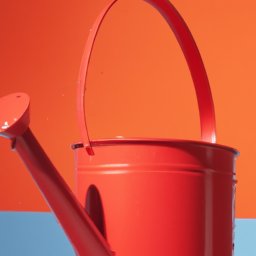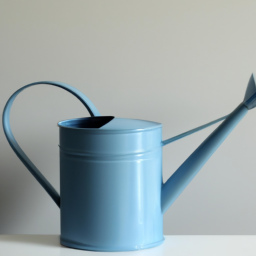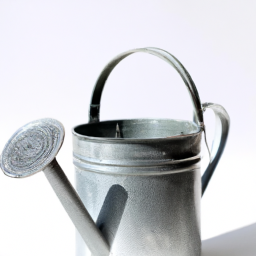
Are you looking for the perfect watering pot to keep your plants healthy and thriving? Look no further! In this blog post, we will discuss everything you need to know about choosing the right watering pot for your indoor or outdoor garden. From different materials and sizes to special features and designs, we’ve got you covered. So, let’s dive in and explore the world of watering pots together!
Benefits of Using a Watering Pot for Your Garden
Introduction
As an expert in gardening tools, I can confidently say that using a watering pot in your garden can have numerous benefits. Watering pots are versatile, easy to use, and can help you maintain a healthy and thriving garden. In this article, I will discuss the various advantages of using a watering pot and provide you with a step-by-step guide on how to effectively use one in your garden.
Benefits of Using a Watering Pot
One of the main benefits of using a watering pot in your garden is that it allows you to water your plants with precision. Unlike a hose or sprinkler system, a watering pot gives you more control over where the water goes, ensuring that each plant receives the right amount of water. This can help prevent overwatering, which can lead to root rot and other issues.
Additionally, using a watering pot can help you conserve water. By targeting the water directly at the base of the plant, you can avoid wasting water on areas that don’t need it, such as walkways or driveways. This not only helps you save water but also saves you money on your water bill.
Another benefit of using a watering pot is that it allows you to water your plants gently. Many plants, especially delicate seedlings or newly transplanted plants, can be easily damaged by a strong stream of water from a hose. A watering pot provides a gentle and even flow of water, which is less likely to cause damage to your plants.
Using a watering pot can also help you save time and energy in the garden. With a watering pot, you can quickly and efficiently water your plants without having to drag around a heavy hose or constantly adjust a sprinkler system. This can make watering your garden a more enjoyable and less time-consuming task.
How to Use a Watering Pot
To effectively use a watering pot in your garden, follow these simple steps:
1. Fill the watering pot with water: Start by filling the watering pot with clean, fresh water. Make sure not to overfill the pot, as this can make it difficult to carry and control.
2. Choose the right nozzle: Most watering pots come with interchangeable nozzles that allow you to adjust the flow of water. Choose a nozzle that suits the needs of your plants, such as a gentle shower for delicate plants or a more powerful stream for larger plants.
3. Water your plants: Hold the watering pot close to the base of the plant and water the soil directly. Avoid getting water on the leaves, as this can promote the growth of mold and mildew. Water each plant thoroughly, making sure to moisten the entire root zone.
4. Repeat as needed: Depending on the weather and the needs of your plants, you may need to water them more or less frequently. Check the soil regularly to determine when your plants need water and adjust your watering schedule accordingly.
By following these steps and using a watering pot in your garden, you can enjoy all the benefits that this versatile tool has to offer. Happy gardening!

How to Choose the Right Watering Pot for Your Plants
Understanding the Different Types of Watering Pots
When it comes to choosing the right watering pot for your plants, it’s important to understand the different types available on the market. One of the most common types is the traditional plastic watering can. These are lightweight and easy to use, making them a popular choice for many gardeners. Another option is a metal watering can, which is more durable but can be heavier to carry when full of water. Additionally, there are ceramic watering pots, which are decorative and can add a touch of style to your garden.
When choosing a watering pot, consider the size and shape of the spout. A long, narrow spout is ideal for reaching deep into planters or hanging baskets, while a wider spout is better for watering larger plants or gardens. Some watering pots also come with a detachable rose attachment, which can help distribute water more evenly and gently over your plants.
Factors to Consider When Choosing a Watering Pot
When selecting a watering pot for your plants, there are several factors to consider. First, think about the size of your garden or the number of plants you need to water. If you have a large garden or many plants, you may want to choose a watering pot with a larger capacity to reduce the number of trips to refill it.
Next, consider the material of the watering pot. Plastic watering cans are lightweight and affordable, but may not be as durable as metal or ceramic options. If you plan to leave your watering pot outside, make sure it is weather-resistant and won’t crack or fade in the sun.
Another important factor to consider is the handle of the watering pot. Look for a comfortable grip that is easy to hold, especially if you have a lot of plants to water. Some watering pots come with ergonomic handles or dual handles for added convenience.
Tips for Maintaining Your Watering Pot
To ensure your watering pot lasts for many seasons, it’s important to properly maintain it. After each use, empty any remaining water from the pot to prevent mold or mildew from forming. If your watering pot has a detachable rose attachment, clean it regularly to remove any debris or mineral buildup.
Additionally, store your watering pot in a cool, dry place when not in use to prevent cracking or warping. If you notice any cracks or leaks in the pot, repair them promptly to avoid water wastage. With proper care and maintenance, your watering pot can be a valuable tool for keeping your plants healthy and hydrated.

Creative Ways to Decorate Your Watering Pot for Indoor Plants
Introduction
When it comes to caring for your indoor plants, having a watering pot is essential. Not only does it make watering your plants easier, but it can also be a stylish addition to your home decor. In this article, we will explore creative ways to decorate your watering pot to add a personal touch to your indoor plant collection.
Choosing the Right Watering Pot
Before you start decorating your watering pot, it’s important to choose the right one for your indoor plants. There are many different types of watering pots available, from traditional terracotta pots to modern ceramic pots. Consider the size and shape of your plants when selecting a watering pot, as well as the overall aesthetic of your home decor.
Once you have chosen the perfect watering pot, you can start thinking about how to decorate it. One popular option is to paint your watering pot with acrylic paint. You can choose a solid color for a sleek look, or get creative with patterns and designs. Another option is to use decoupage to add decorative paper or fabric to your watering pot. This can be a fun way to personalize your pot and make it truly unique.
If you prefer a more natural look, you can also decorate your watering pot with twine or rope. Simply wrap the twine around the pot in a spiral pattern, securing it with glue as you go. This can add a rustic touch to your watering pot and complement the greenery of your indoor plants.
Adding Personalized Touches
To truly make your watering pot your own, consider adding personalized touches to it. One idea is to use letter stickers to spell out a word or phrase on your pot. This could be the name of the plant it belongs to, a motivational quote, or simply your initials. You can also use stencils to create patterns or designs on your pot, adding a unique touch to your indoor plant collection.
Another way to personalize your watering pot is to add embellishments such as beads, buttons, or charms. You can glue these onto the pot in a decorative arrangement, creating a one-of-a-kind piece that reflects your personal style. If you have a collection of indoor plants, you could even create a theme for your watering pots, using similar colors or materials to tie them all together.
In addition to decorating the outside of your watering pot, don’t forget about the inside! You can add a layer of decorative stones or pebbles to the bottom of the pot before adding soil. This not only adds visual interest to your pot but also helps with drainage and aeration for your plants. You can also add a small plant marker or label to your pot, so you always know what’s growing inside.
In conclusion, decorating your watering pot is a fun and creative way to add personality to your indoor plant collection. Whether you choose to paint, decoupage, or add embellishments, there are endless possibilities for making your watering pot unique. So get creative and let your imagination run wild as you decorate your watering pot for your indoor plants.
Key Takeaways
Are you tired of lugging around heavy watering cans or dealing with messy hoses? A watering pot might just be the solution you’ve been looking for! These handy tools are lightweight and easy to use, making watering your plants a breeze. With a long spout for precise pouring and a comfortable handle for easy carrying, a watering pot is a must-have for any gardener.
Not only are watering pots convenient, but they can also help you save water. The narrow spout allows you to target the water directly at the base of your plants, minimizing waste and ensuring that your plants get the hydration they need. Plus, the compact size of a watering pot makes it easy to control the flow of water, so you can avoid overwatering and keep your plants healthy and happy. So say goodbye to heavy watering cans and hello to the convenience of a watering pot!
Check Out These FAQs:
Q1. What is a watering pot?
A1. A watering pot is a container used for watering plants, flowers, and gardens. It typically has a spout for easy pouring and a handle for carrying.
Q2. How is a watering pot different from a watering can?
A2. While both are used for watering plants, a watering pot typically has a longer spout and a more decorative design compared to a traditional watering can.
Q3. What materials are watering pots made of?
A3. Watering pots can be made of various materials such as plastic, metal, ceramic, or even glass. The choice of material often depends on personal preference and intended use.
Q4. How do I choose the right watering pot for my needs?
A4. When choosing a watering pot, consider factors such as size, material, design, and functionality. Make sure it is easy to hold, pour, and fits the amount of water you typically need for your plants.
Q5. Can a watering pot be used for indoor plants?
A5. Yes, a watering pot can be used for both indoor and outdoor plants. Just make sure to choose a size and design that fits your indoor space and watering needs.

James Wong is a renowned ethnobotanist, plant scientist, and local television presenter. With a passion for demystifying plant science, he is known for translating complex botanical concepts into practical advice for everyday plant enthusiasts. James’s expertise spans from traditional gardening to cutting-edge plant technologies, making his insights accessible and informative.


